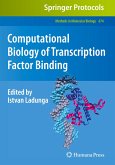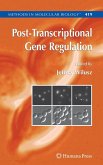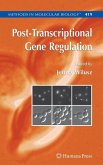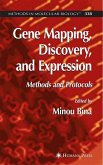Transcriptional regulation controls the basic processes of life. Its complex, dynamic, and hierarchical networks control the momentary availability of messenger RNAs for protein synthesis. Transcriptional regulation is key to cell division, development, tissue differen- ation, and cancer as discussed in Chapters 1 and 2. We have witnessed rapid, major developments at the intersection of computational biology, experimental technology, and statistics. A decade ago, researches were struggling with notoriously challenging predictions of isolated binding sites from low-throughput experiments. Now we can accurately predict cis-regulatory modules, conserved cl- ters of binding sites (Chapters 13 and 15), partly based on high-throughput ch- matin immunoprecipitation experiments in which tens of millions of DNA segments are sequenced by massively parallel, next-generation sequencers (ChIP-seq, Chapters 9, 10, and 11). These spectacular developments have allowed for the genome-wide mappings of tens of thousands of transcription factor binding sites in yeast, bacteria, mammals, insects, worms, and plants. Please also note the no less spectacular failures in many laboratories around the world.
From the reviews:
"Gives us an overview of transcription and its regulation. ... The methods are very up-to-date and clearly presented by authors ... . The use of tools for predicting transcription factors binding sites is also very carefully presented in a text that is accessible for beginners ... . In summary, this book presents an important tool for entering the growing field of bioinformatics and its use for the study of transcription. ... If we cannot read all books ever written, this one is a good choice." (Carla Columbano Oliveira, Brazilian Journal of Pharmaceutical Sciences, Vol. 47 (2), Summer, 2011)
"Gives us an overview of transcription and its regulation. ... The methods are very up-to-date and clearly presented by authors ... . The use of tools for predicting transcription factors binding sites is also very carefully presented in a text that is accessible for beginners ... . In summary, this book presents an important tool for entering the growing field of bioinformatics and its use for the study of transcription. ... If we cannot read all books ever written, this one is a good choice." (Carla Columbano Oliveira, Brazilian Journal of Pharmaceutical Sciences, Vol. 47 (2), Summer, 2011)








